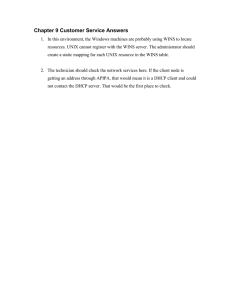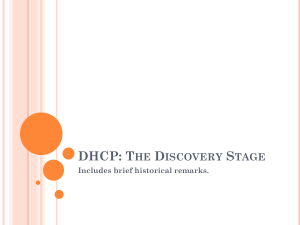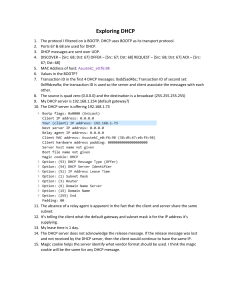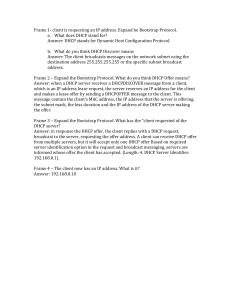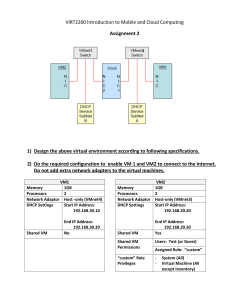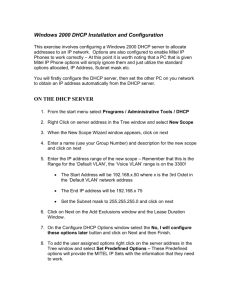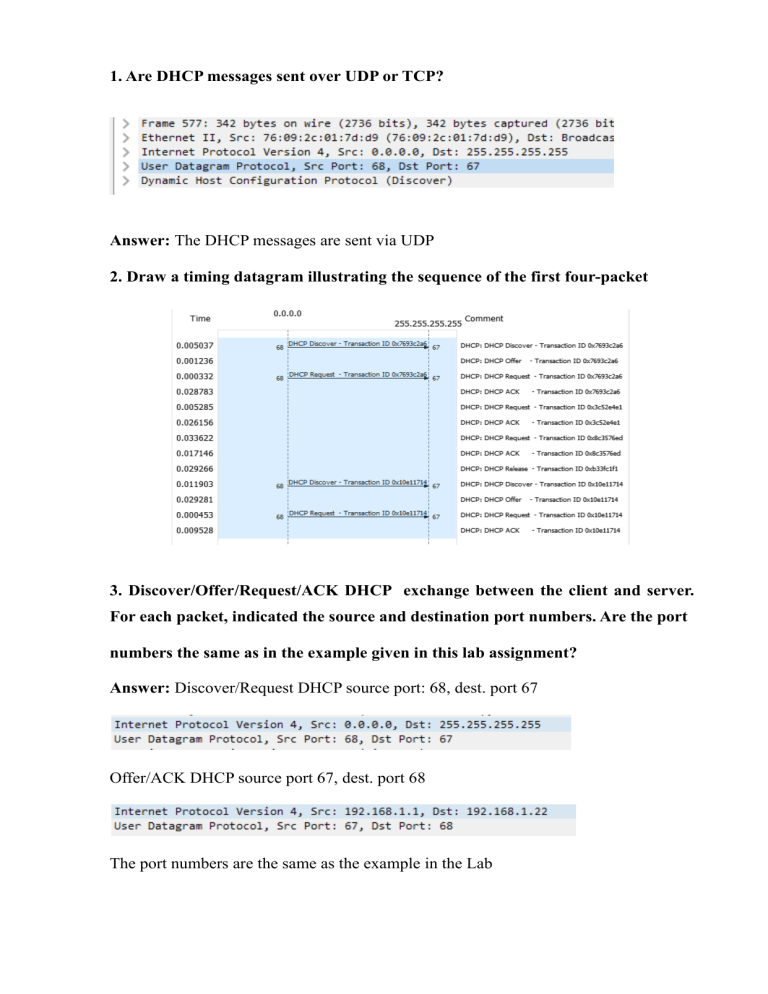
1. Are DHCP messages sent over UDP or TCP? Answer: The DHCP messages are sent via UDP 2. Draw a timing datagram illustrating the sequence of the first four-packet 3. Discover/Offer/Request/ACK DHCP exchange between the client and server. For each packet, indicated the source and destination port numbers. Are the port numbers the same as in the example given in this lab assignment? Answer: Discover/Request DHCP source port: 68, dest. port 67 Offer/ACK DHCP source port 67, dest. port 68 The port numbers are the same as the example in the Lab 3. What is the link-layer (e.g., Ethernet) address of your host? Answer: The ethernet address of my host is cc:71:90:4a:ec:80 4. What values in the DHCP discover message differentiate this message from the DHCP request message? Answer: DHCP Message Type Request includes a server identifier field 5. What is the value of the Transaction-ID in each of the first four (Discover/Offer/Request/ACK) DHCP messages? What are the values of the Transaction-ID in the second set (Request/ACK) set of DHCP messages? What is the purpose of the Transaction-ID field? Answer: The transaction ID is different so that the host can differentiate between different requests made by the user First set Transaction ID Second set Transaction ID 6. A host uses DHCP to obtain an IP address, among other things. But a host’s IP address is not confirmed until the end of the four-message exchange! If the IP address is not set until the end of the four-message exchange, then what values are used in the IP datagrams in the four-message exchange? For each of the four DHCP messages (Discover/Offer/Request/ACK DHCP), indicate the source and destination IP addresses that are carried in the encapsulating IP datagram. 7. What is the IP address of your DHCP server? 8. What IP address is the DHCP server offering to your host in the DHCP Offer message? Indicate which DHCP message contains the offered DHCP address. 9. In the example screenshot in this assignment, there is no relay agent between the host and the DHCP server. What values in the trace indicate the absence of a relay agent? Is there a relay agent in your experiment? If so what is the IP address of the agent? 10. Explain the purpose of the router and subnet mask lines in the DHCP offer message. 11. In the DHCP trace file noted in footnote 2, the DHCP server offers a specific IP address to the client (see also question 8. above). In the client’s response to the first server OFFER message, does the client accept this IP address? Where in the client’s RESPONSE is the client’s requested address? 12. Explain the purpose of the lease time. How long is the lease time in your experiment? 13. What is the purpose of the DHCP release message? Does the DHCP server issue an acknowledgment of receipt of the client’s DHCP request? What would happen if the client’s DHCP release message is lost? 14. Clear the bootp filter from your Wireshark window. Were any ARP packets sent or received during the DHCP packet-exchange period? If so, explain the purpose of those ARP packets.
